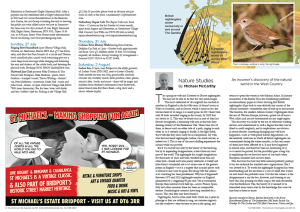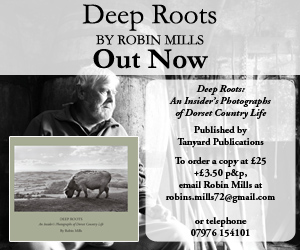
This spring my wife and I listened to Dorset nightingales. We may not be able to do that for very much longer.
The most celebrated of all songbirds has crashed in numbers in England in the last fifty years (it doesn’t occur in Wales or Scotland), and in Dorset, which is more or less the western limit of its range, it is nearly gone. In 2011 there were only 39 birds recorded singing in the county; by 2023 that was down to 12. This year we found ours in one of their last Dorset strongholds, a remaining wild area in the lush dairy farming country of the Blackmoor Vale. There were two of them, in dense scrub on either side of a path, singing to each other or so it seemed; singing so loudly, as the light faded, that it felt like they must surely be in competition. My wife, who had not heard nightingales before, was much moved, as indeed was I. This is one of the most thrilling experiences the natural world can provide.
But I was moved not only by the beauty of the birdsong but by its impending disappearance, at least from my own part of the world. The nightingale has caught imaginations for thousands of years and been versified more than any other bird—Greek and Latin poetry celebrates it widely and John Keats’s wonderful ode is of course one of the greatest poems in English—so it is a tragedy that in many places such as Dorset it may soon be gone. But along with the sadness at its vanishing has been puzzlement. Why has it happened? Between 1970 and 2022 nightingale numbers in England plummeted by a staggering 90 per cent. Yet in continental Europe their numbers have held up—across France, Spain, Italy and other countries there has been no comparable decline. Ornithological scientists have long searched for a reason. This year they may have found it.
Nightingales, brown robin-sized birds which are as plain in plumage as they are sublime in song, are summer migrants just like swallows—they fly here to nest in the spring, and return to spend the winter in sub-Saharan Africa. In January researchers at the British Trust for Ornithology published an extraordinary paper in Nature showing that British nightingales all go back to one relatively tiny corner of the African continent—remarkably, they all end up in and around The Gambia, the smallest African country. Nightingales from the rest of Western Europe, however, spread out all across West Africa and are not concentrated on any single region.
The discovery was made by the use of electronic tracking devices, now miniaturised to such a degree that they can be fitted to small songbirds, and its implications are obvious: in recent decades something damaging may well have happened—such as widespread habitat degradation—to the relatively small area in which all British nightingales are concentrated during the winter months, so that very many of them have been affected by it. It may have happened in remote areas and there has been no monitoring of it, so it cannot be proved; but the possibility goes a long way to explaining why we have lost most of our birds when European countries have not lost theirs.
This discovery has had very little national publicity; perhaps it was too technical for standard news organisations. But I was riveted by it. To watch the nightingale disappear has been heartbreaking and for me there is a sort of relief, that at least we now know the probable cause. Not that the sadness at the disappearance is any the less, however; and listening to our birds this May, pouring out their song as the dark descended over the Blackmoor Vale, the beauty of it seemed to be intensified many times over by the knowledge that soon we may hear it there no more.




